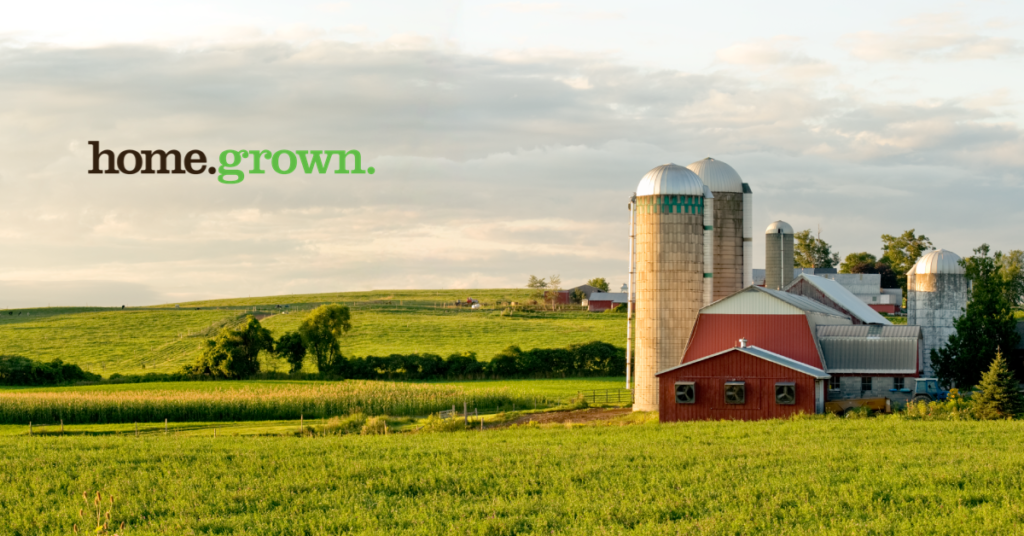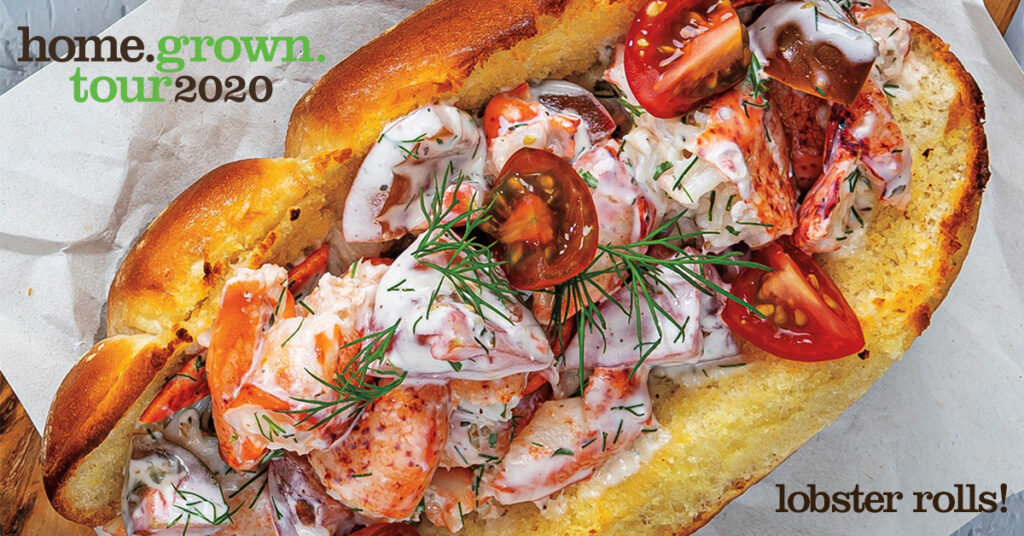
Summer on a Bun: The Lobster Roll
Native to New England, the lobster roll is famous for its delectable qualities and fresh seafood flavors that transport you straight to the ocean with just one bite.
Lobster rolls contain chunks of fresh lobster meat on a buttered, griddled split-top bun. The iconic rolls’ origins and which version best represents the authentic lobster roll are hotly debated. Is hot filling best or the cold lobster salad? Some favor lettuce while others prefer celery. Two of the most popular versions are Connecticut-style, featuring warm chunks of lobster meat soaked in butter and Maine-style containing cooled steamed lobster meat lightly dressed with mayonnaise.
Dive Into Quality Seafood
No matter your preference, the secret to an exceptional lobster roll is quality lobster. Using the freshest catches creates an unforgettably delicious sandwich. At Price Chopper, we partner with our New England friends at Ready Seafood in Portland, Maine. They offer superior quality with sustainable, fresh lobsters boasting succulent texture, sweet flavor and countless culinary options.
Focus on Fresh Flavors
Natives and tourists alike can’t get enough of this satisfying northeastern sandwich. Enjoy summer on a bun by picking up local Price Chopper lobster and creating fresh takes of this American staple! Lobster and vibrant peak-season produce make an undeniably fresh duo. Try Heirloom Tomato-Dill Lobster Rolls made with claw and knuckle lobster meat, Greek yogurt and mayonnaise, as well as Greek vinaigrette, lemon, heirloom tomatoes and dill served in New England-style hot dog rolls. Or, since lobster and zest go hand in hand, give lobster rolls a tropical twist by creating a Mango-Avocado Ceviche Lobster Roll. Combine claw and knuckle lobster meat with mango, avocado and red onion, along with cilantro, lime, jalapeños and olive oil served on a brat bun. Enjoy homemade lobster rolls with classic sides like French fries, potato chips, coleslaw and pickles.
Ready to roll? Visit pricechopperready.com for more tips and mouthwatering lobster roll recipes!
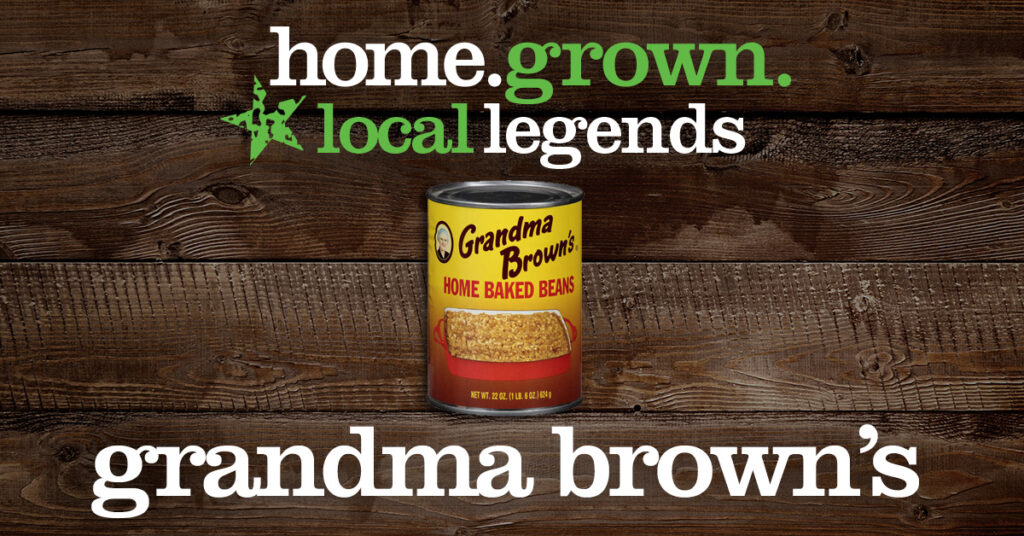
Local Legends: Grandma Brown's Baked Beans
Local Legends: Grandma Brown’s Baked Beans
We’re rockin’ the support for local growers and producers this summer! We’ll be touring our Northeast region, highlighting local products and crops, talking to farmers and artisans, and telling stories on local legends. Join us on our journey! Next up, Grandma Brown’s Baked Beans from Mexico, New York.
In Upstate NY, Grandma Brown’s Baked Beans are a summer staple. The perfect side dish to your hot dog or chicken, it’s almost an expectation! Grandma Brown’s offers original, no nonsense beans; try adding ketchup and mustard, some brown sugar, caramelized onions, and a splash of soy sauce. That’s all it takes to experience the quality of these Oswego County gems.
Grandma Brown’s came about during the Great Depression when Lulu Brown began making large pans of baked beans and selling them in grocery stores. People loved them! So Lulu’s husband, Earl, and her son, Robert, decided to sell them in Oswego NY. Shortly after their start, Earl died, and Robert Whitley joined the company, which became known as Brown-Whitney-Brown, or BWB for short. BWB continued to grow, and soon required a plant where they could process and can the beans.
Grandma Brown’s operates the old-fashioned way. They still use the same logo from 1955, featuring an image of Grandma Brown and her red casserole loaded with beans. They also have no social media profiles and rely solely on word of mouth advertising. With that being said, Grandma Brown has become such a staple in our region that bean lovers talking about them is all they need to thrive. That’s what makes them a local legend! For us, our summer just isn’t summer without enjoying plenty of Grandma Brown’s.
Stop by your local Price Chopper/Market 32 for your Grandma Brown’s Baked Beans or shop with us online!
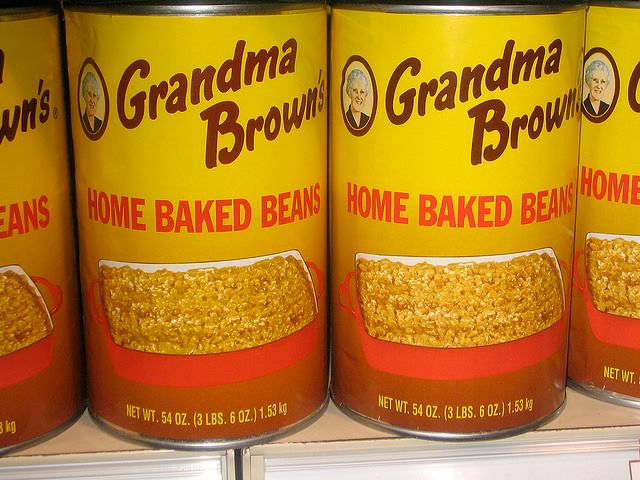
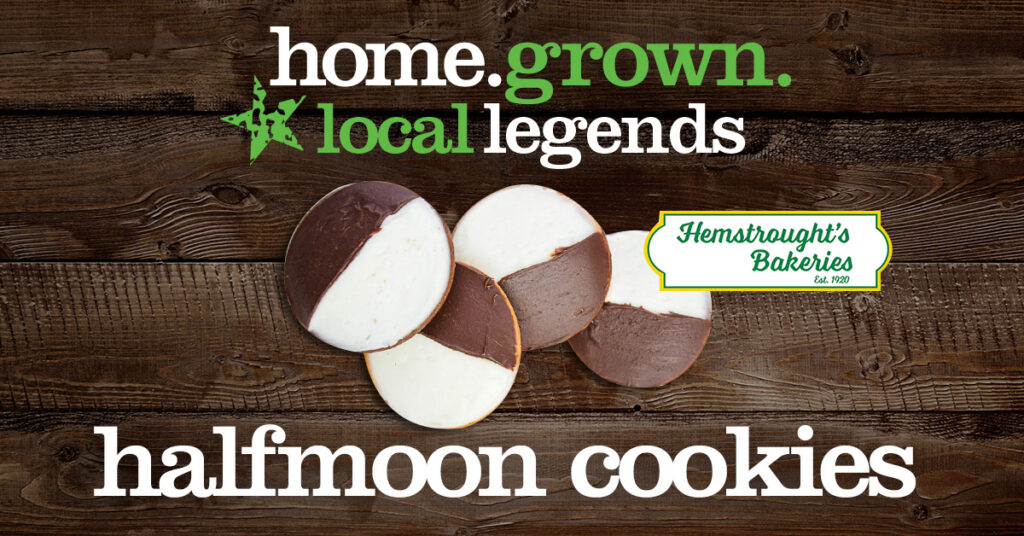
Local Legends: Halfmoon Cookies
We’re rockin’ the support for local growers and producers this summer! We’ll be touring our Northeast region, highlighting local products and crops, talking to farmers and artisans, and telling stories on local legends. Join us on our journey! Next up, Halfmoon Cookies made by Hemstrought’s Bakeries in Utica, New York.
In 1920, the very first Halfmoon Cookie recipe was created by Harry B. Hemstrought. He put it together right on Genesee St. in Utica, NY. Since then, the famous recipe has been passed down from baker to baker at Hemstrought’s. The cookies have won the hearts of many, with a fluffy, cake-like bottom, topped perfectly with one half chocolate fudge and the other buttercream frosting. Halfmoons are truly the pinnacle of dessert.
Fast forward to 2020 and Halfmoons have withstood the test of time. 100 years later and the recipe has not gone through a single modification. Everything about the cookies remain original and authentic. However, some have attempted to imitate the highly sought-after recipe, like with “black and whites,” commonly found in New York City. But if you ask the folks at Hemstrought’s, Halfmoons remain in a class of their own.
Halfmoon Cookies are truly one of the Northeast’s finest treasures. We love partnering with Hemstrought’s Bakeries and having their amazing treats right in our own neighborhood. If you haven’t had the pleasure, we recommend giving one of these cookies a try as soon as possible!
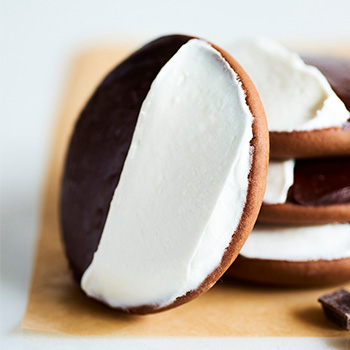
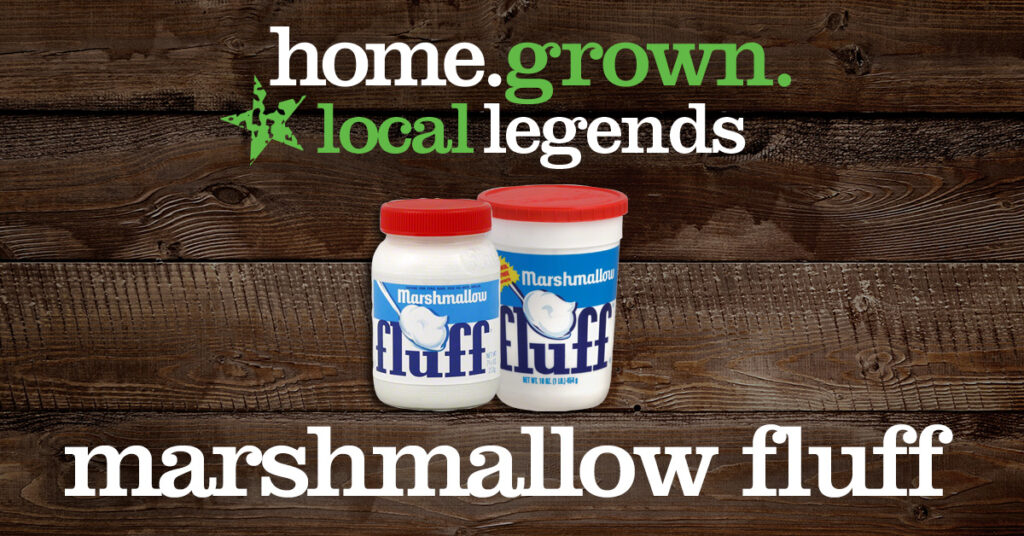
Local Legends: Marshmallow Fluff
We’re rockin’ the support for local growers and producers this summer! We’ll be touring our Northeast region, highlighting local products and crops, talking to farmers and artisans, and telling stories on local legends. Join us on our journey! Next up, Marshmallow Fluff made in Lynn, Massachusetts.
In 1920, H. Allen Durkee and Fred L. Mower, both veterans of the United States Infantry in World War I, had teamed up to create Marshmallow Fluff. They started out making candies together, but eventually jumped on the idea of Fluff. They started out cooking their product at night and selling it door to door during the day.
After a productive decade, in 1930, Durkee himself stated “Ten years ago we started out with one barrel of sugar, a few tin cans, two spoons, one secondhand Ford, and no customers, but plenty of prospects. Today we have thru the fine cooperation of the wholesale grocers, the largest distribution of marshmallow cream in New England, and no Ford.”
Since their humble beginnings, Durkee-Mower has turned Marshmallow Fluff into a Northeast region staple. But it doesn’t stop there. Fluff is available all across the world in Canada, the UK, France, Germany, Israel, South Africa, Belgium, and more. Of course, Fluff has made its way throughout the United States as well.
Marshmallow is a versatile treat and can be used in tons of recipes. If this blog made you hungry we suggest making the classic Fluffernutter. Commonly enjoyed on playgrounds, after school, and in college dorms alike, the dish is simply Marshmallow Fluff and peanut butter mixed between two slices of bread. It’s a timeless treat for all ages. Our PICS Peanut Butter is an all-star companion in this sandwich!
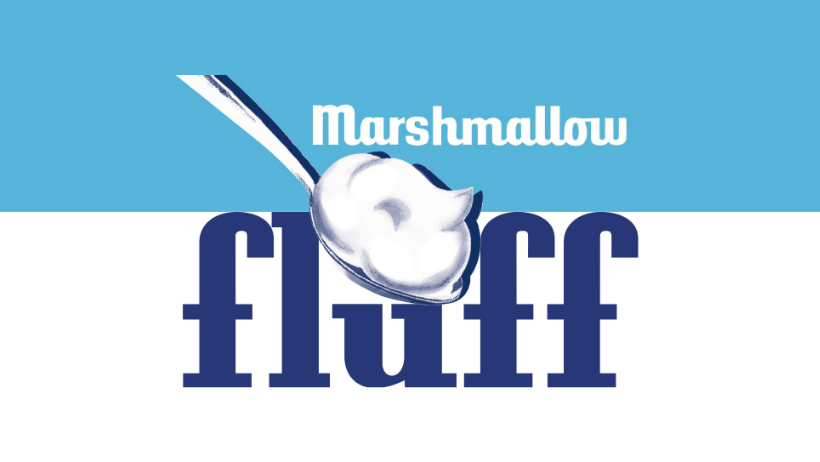
Marshmallow Fluff is a legend of our region and we’re proud to offer it in our stores. Visit your local store or shop with us online for Marshmallow Fluff. In the meantime, we’re off to make some Fluffernutters.

Explore Our Region!
Our region is home to a wide variety of local craft beer, dairy products, produce and more, but it’s also home to some of the best mountains, lakes and hiking trails in the world. So, as part of our home.grown. tour we wanted to take a moment to shine the spotlight on the local outdoors of our Northeast region! In this Explore Our Region blog, we asked some of our teammates for their favorite spots for adventure and fun. Check it out!
Dylan G. – Pharaoh Lake Wilderness Area, Schroon Lake NY
“When I moved to upstate NY 5 years ago, I was blown away at the abundance of locations for outdoor adventures. I couldn’t wait to put my boots on and chase every hike/backpacking trip I could find on the map. One of my favorite spots I discovered and continue to frequently visit is the Pharaoh Lake Wilderness Area. My first excursion out to this area was with my little brother. We set out to backpack the 35 mile route around the entire wilderness area in 4 days, and we were able to take in all the natural beauty it possessed. We discovered that Pharaoh Lake has everything you could ask for in one spot, whether you want a multi-day backpacking trip, short hike, mountain to climb, or a secluded lake/pond to camp out at and swim… this area has it! I would highly recommend this spot to anyone who hasn’t visited it, you won’t be disappointed!”

Phil G. – Chapel Pond Slab, Keene NY
“Chapel Pond Slab is a fantastic multipitch climb above Chapel Pond on route 73, heading towards Lake Placid. It’s a must do yearly climb that takes about half a day to get up and back. Beautiful views of the pond below and Giant Mountain across the street. A classic climb in the Adirondacks.”

Danielle T. – Mount Marcy, Keene NY
“One of my favorite trails I’ve done was Mount Marcy in the Adirondacks. It has a great combination of terrain. You can run the bottom portion of the mountain and it’s a nice scramble to get to the top. Plus you can’t beat the views on top.”

Antoni F. – Tongue Mountain Range, Bolton Landing NY
“One of my favorite and most frequented locations to trail run and hike is the Tongue Mountain Range using the Northwest Bay Trail on Lake George. It’s a longer 14.8 mile trail and loop with moderate elevation. The lower portion of the trail weaves in and out from the water’s edge which provides numerous areas to stop and swim in the lake. The furthest point on the trail, Montcalm Point, looks out over all of Lake George. However some of the best views are along the trail itself with multiple peaks and out looks.”
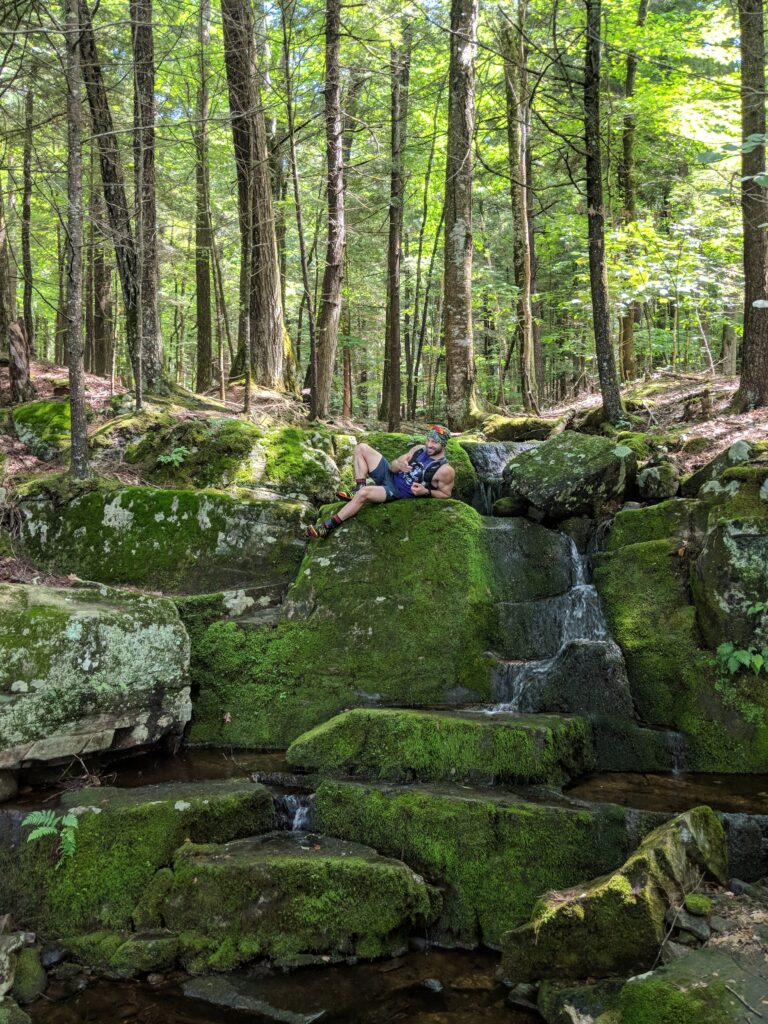
Tyler B. – Kane Mountain, Canada Lake NY
“I’ve been hiking Kane Mountain in New York’s Adirondack region my whole life. The hike is great: not too steep and not too long, and ends with a fire tower climb that reveals an incredible view of multiple Adirondack lakes below. It’s a great adventure for beginners and seasoned experts alike!”

Beyond the beautiful Adirondack region of our home state of New York, the Northeast is also home to the Green Mountains of Vermont, White Mountains of New Hampshire and The Berkshires of Massachusetts, in addition to lots of other hiking spots, lakes and more. If you’re looking for new outdoor adventures in the Northeast, definitely check out these great spots. You might discover a new favorite getaway!
Follow our home.grown. tour action
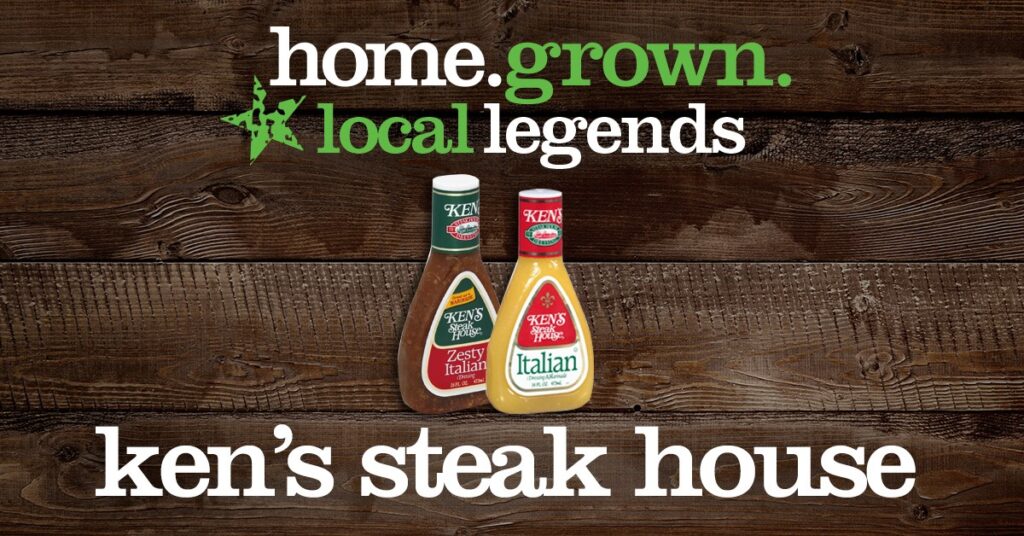
Local Legends: Ken's Steak House
We’re rockin’ the support for local growers and producers this summer! We’ll be touring our Northeast region, highlighting local products and crops, talking to farmers and artisans, and telling stories on local legends. Join us on our journey! First up, Ken’s Steak House in Framingham, MA.
Ken’s has a rich history in our area and we’re proud to partner with them in our grocery department. They provide us with a number of items including dressings, sauces, and marinades. All homegrown and all delicious!
The story begins in 1935 when Ken and Florence Hanna opened a small restaurant called Lakeside Cafe. It wasn’t long before regular patrons began referring to the place as “Ken’s” in association with its owner. Five years later, Ken had a vision, he purchased tiny McHale’s Diner on what was then a desolate Route 9, known as “Starvation Alley.” Despite its lack of success, Ken had plans to make the area prominent. Magically, Ken’s Steak House is still there today, and Route 9 has become a top retail destination in the US.
When it came to Ken’s Steak House, Ken and Florence had a straightforward strategy, serve quality food at a reasonable price, along with an honest drink and a good cup of coffee to accompany it. On top of that, the Hannas made sure all diners received courtesy, attentiveness, and efficiency from the staff. The service and food were always great, but it was Florence’s salad dressings that shined. Each dressing was made under the instructions of her recipes, all while she kept a watchful eye of the process. Ken’s salads became famous and played a large role in the growth of the business.
Over the years, many family members have carried on the tradition of working at the restaurant. Currently, Ken’s Steak House is operated by Ken’s son Timothy and his wife Darlene. As time has passed, the restaurant has served famous entertainers, athletes, and successful political and business leaders. However, it might be the spirit by which Ken’s treats every customer like a celebrity that keeps people coming back.
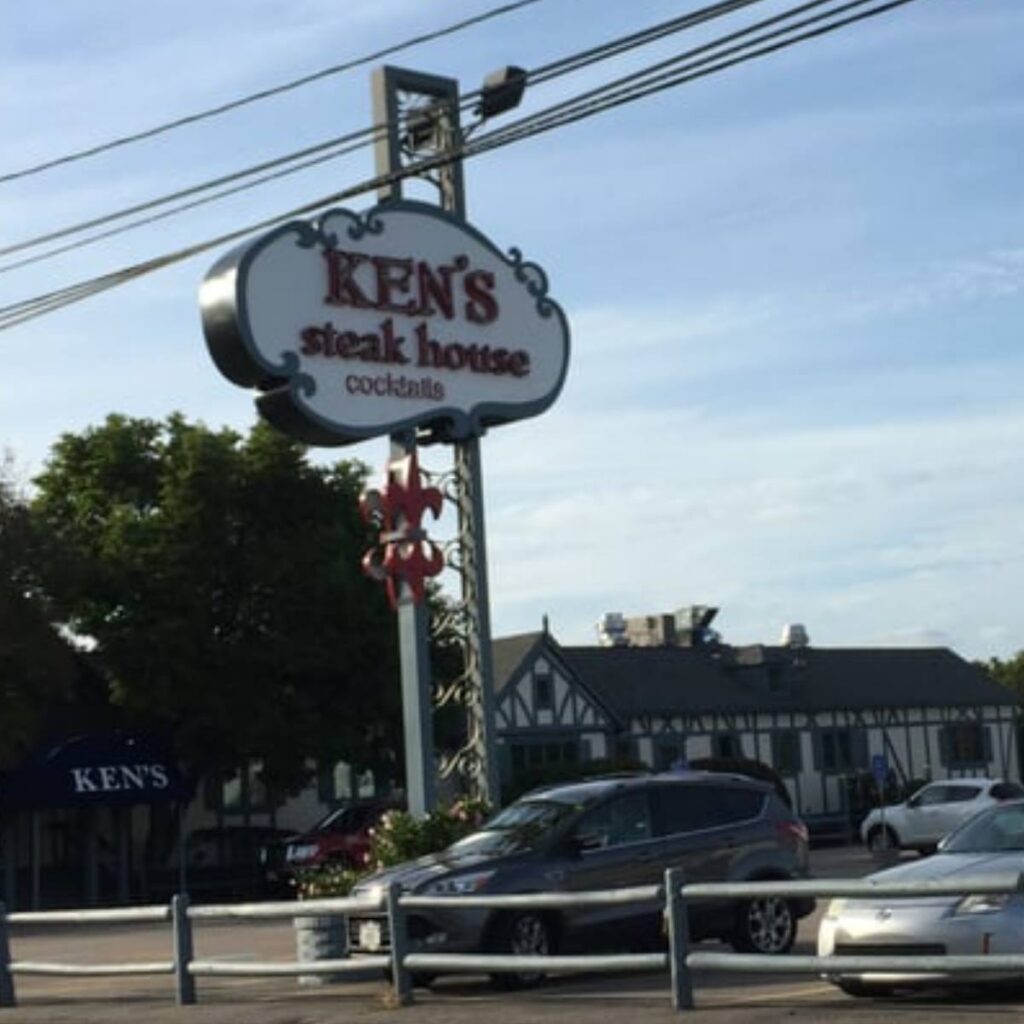
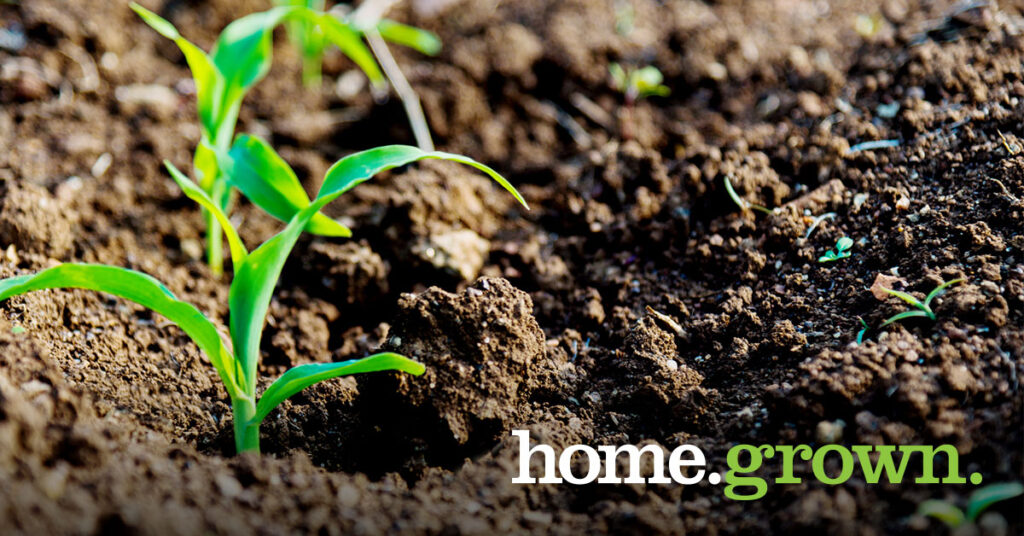
Local Produce Season: A Crop Roster
We’ve been partnering with local farms since 1932, and it’s because of their hard work that we’re able to offer fresh, regional produce in our stores each year. Some of these farms, like Black Horse Farms in Coxsackie, NY have been partnering with us for over 50 years! This time of year is one of our favorites because of all the local crops that become available. You probably know that some crops take longer to grow than others, but do you know which ones are the early crowd and which ones take longer here in the Northeast? We break it down below!
Season Starters
Introducing our growing season starting lineup: lettuce, summer squash and radishes.
Lettuce: Thriving in temperatures around 60ºF to 70ºF, lettuce is definitely a lead-off batter in the growing season lineup. Many varieties of lettuce reach maturity in as little as 30 days, and some can be harvested even before then as microgreens.
Squash: Squash shine their brightest when the air temperature reaches an average of 65ºF. They need 50 to 65 frost free days to properly mature, making them typically safe for planting in the final weeks of spring.
Radishes: We source radishes from local folks like A. Gurda Produce in Pine Island, NY. Requiring anywhere from 22 to 70 days to harvest in New York’s Black Dirt Region, radishes are a cool-weather crop, so farmers try to complete harvesting before the weather becomes too warm. If you’re a home grower, radishes are best sown in the garden two to three weeks before the average last frost in spring.
Peak-Season Heavy Hitters
When the growing gets hot, our heavy hitters get growing: corn, eggplant, peppers, and tomatoes.
Corn: Corn thrives when the soil temperature reaches 60ºF. Two to three weeks after the last frost of spring is a good estimate. Depending on the variety and amount of heat during growing season, corn takes between 60 to 100 days to harvest. It grows well in air temperatures from 60ºF up to as hot as 95ºF. We get corn from folks like Shaul Farms in Fultonham, NY and Kinderhook Creek Farm in Stephentown, NY: some of the best corn growers in the corn growing game.
Eggplant: Eggplant needs a long, warm growing season to reach their full potential. They’re sensitive to cool climates and will fail in any frost or light freezing. Ideally, eggplants need four months of 60ºF to 85ºF temperatures. If you’re a gardener and are located in a cooler spring climate, eggplant will ideally need to be started indoors.
Peppers: Speaking of starting indoors, peppers need similar treatment. Start your seeds indoors 8-10 weeks before the last spring frost date. They require a growing season of 60 to 90 days. Once we start getting in Northeast-grown peppers in our stores we know the season’s growing peak is in full effect!
Tomatoes: We’re proud to source tomatoes from a variety of local farms, like Paul Mazza’s in Essex, VT. Tomatoes enjoy having their fun in the sun, and do not tolerate frost. It takes tomatoes between 60 to 80 days to mature. When planting, our farmers have to make sure their crop is in an area where it can receive 6 hours of sunlight a day. Luckily, most farm fields in our region are wide open and get plenty of sun!
Late Season MVPs
At the end of the season, we call on the MVPs to close things out: hard squash and pumpkins.
Hard Squash: Hard squash grows best in air temperatures of 50ºF to 90ºF. It has a growing season of anywhere from 60 to as many as 110 days. If you’re growing them in your garden, they should be set to plant no later than three weeks after the last frost of spring, or once the soil has warmed to at least 60ºF. A lot of folks are on Team Butternut, but we’re fanatics of Team Acorn.
Pumpkins: A favorite crop of farms like Black Horse Farms in Coxsackie NY, pumpkins are a tender vegetable. In Northern locations, pumpkins for Halloween are usually planted in late May. We typically offer regionally-grown pie pumpkins until early-winter, which wraps up our local growing season roster until the following year.
There you have it! We hope you’ve enjoyed our home.grown. season breakdown. We’re lucky to partner with local growers in our region for locally grown produce each year. From apples to zucchini, when it’s made or grown here, we get it here!
Learn more about what home.grown. means to us!
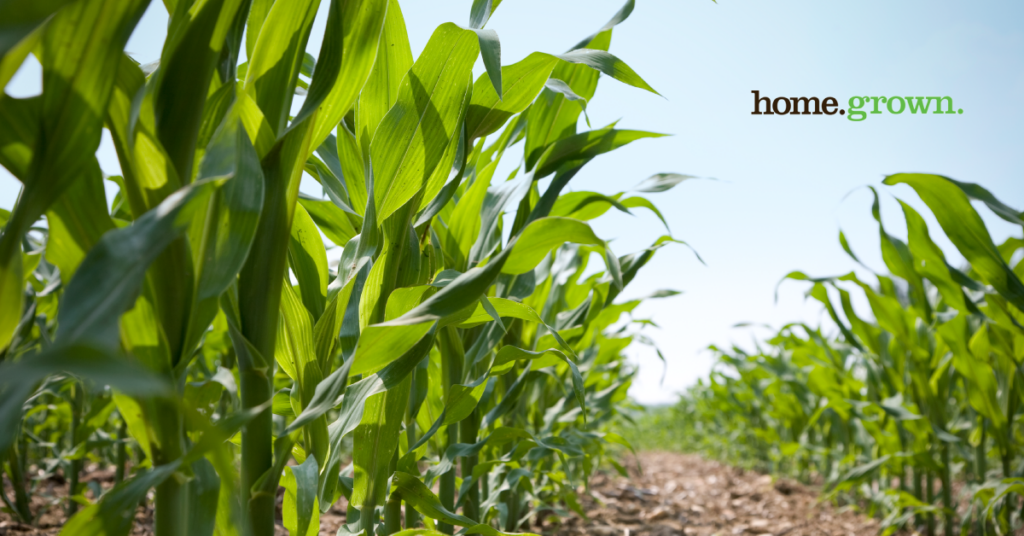
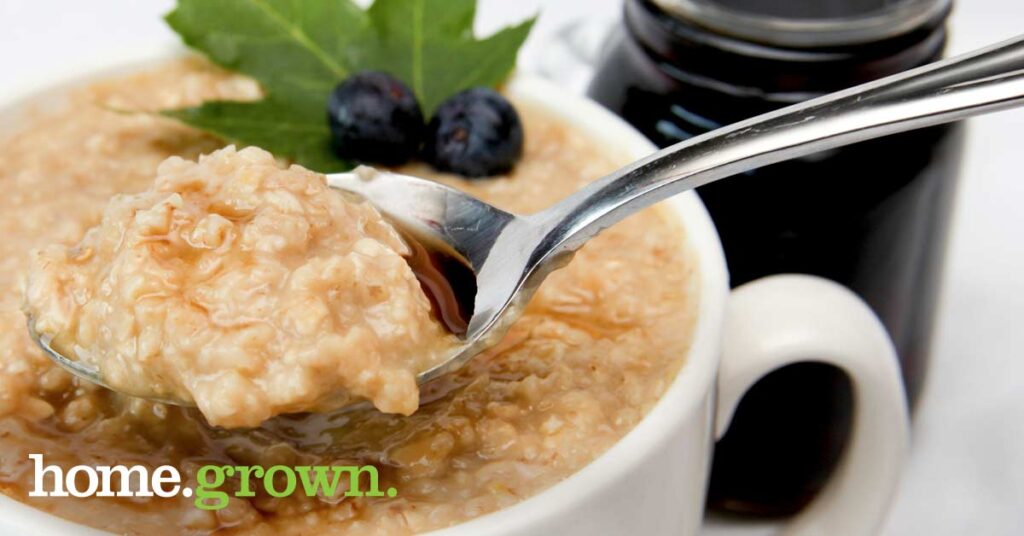
It’s maple sugaring season in the Northeast, and we’re all amped up for local maple.
Today’s lesson: Maple Syrup Beyond the Stack of Pancakes!
Each winter as the weather starts to warm up, maple trees in our region produce sweet sap that contains a small amount of sugar and a large amount of water. By boiling off the water from sap, a 100% pure sugar substance is created: maple syrup. The almighty nectar of the maple tree!
We live in one of the only regions in the world with the ideal climate for maple agriculture, and we’re proud to partner with a wide variety of local maple farmers and producers here in the Northeast, who are currently hard at work in the midst of this year’s maple sugaring season.
A lot of folks love pouring maple syrup on their pancakes and waffles, which is certainly delicious, but maple has so much more to offer. Maple syrup is a versatile ingredient and can be used in baked goods, savory dinner entrées and more!
Bring maple syrup to life beyond your pancakes by…
Stirring it into your morning (or afternoon, or evening) coffee: Maple syrup is a 100% pure and natural sweetener: it’ll add a delicious flavor to your cup of coffee.
Pouring it over ice cream: Take a bowl of your favorite ice cream (we like vanilla the best) and drizzle some maple syrup over it, with a blanket of whipped cream: this is what dreams are made of. Our New Hampshire pals at Ben’s Sugar Shack are big fans of this treat.
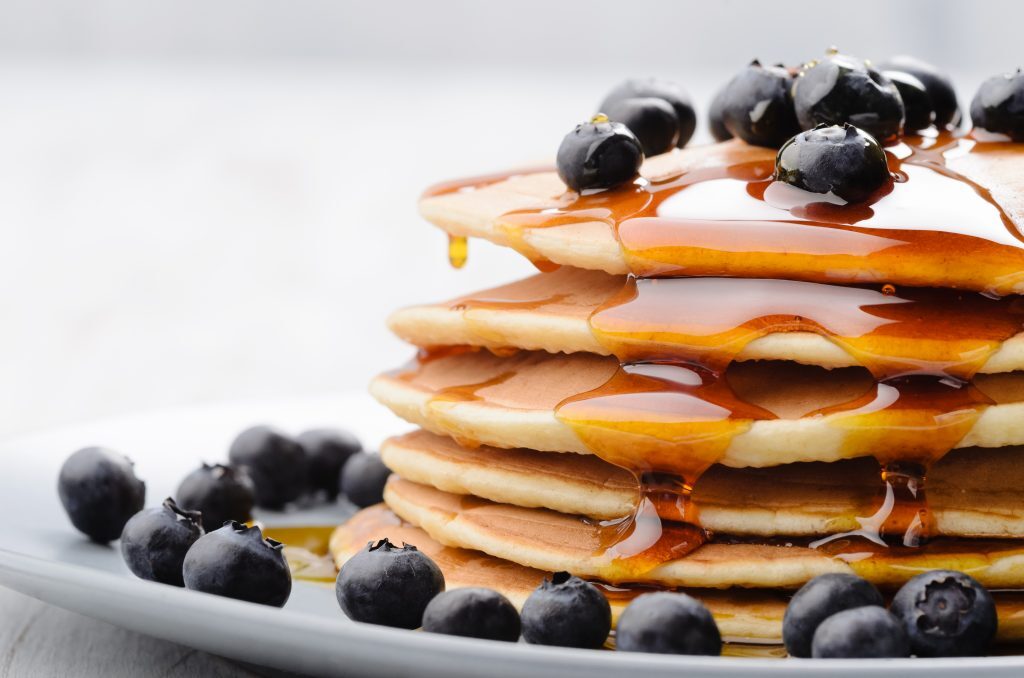
Making maple garlic salmon: Mix maple syrup with minced garlic and a pinch of salt and glaze salmon with it. It’s a game changer.
Making maple mustard: Chances are you’ve had honey mustard more than once in your life. Maple mustard is a similar (but incredible) spin on the classic yellow condiment. Just whisk a bit of maple syrup into some Dijon mustard and you’ve got yourself a new favorite salad dressing, sandwich spread and more. Sweet.
Making salted maple pie: This one takes a little effort, but the results will have you shedding tears of joy. Vermont’s famous Butternut Mountain Farm offers this awesome recipe that’ll satisfy your sweet tooth and your savory tooth.
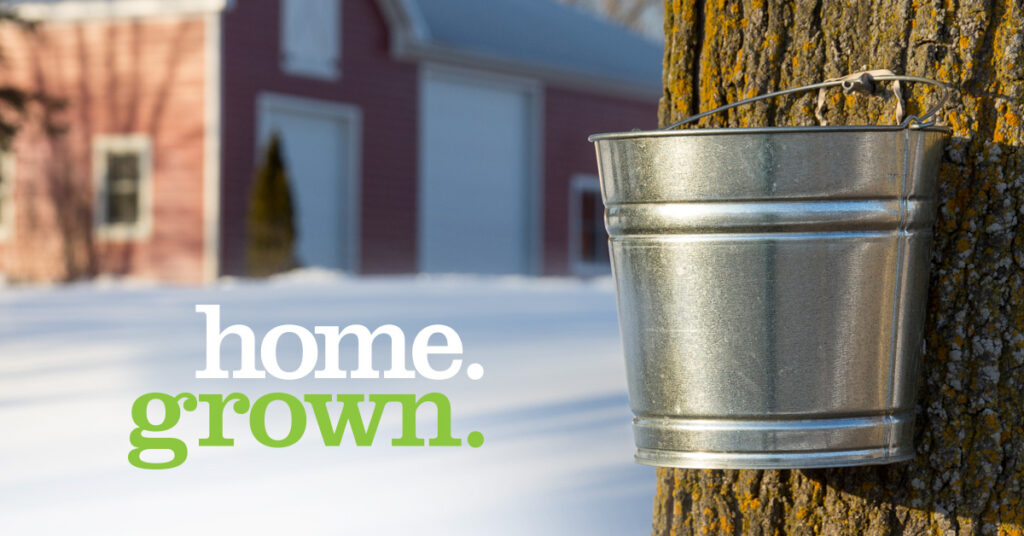
There you have it: maple syrup doesn’t have to live exclusively in breakfast land. Looking for more maple-spiration? Check out our home.grown. maple Pinterest board for a collection of recipes from our local maple partners!
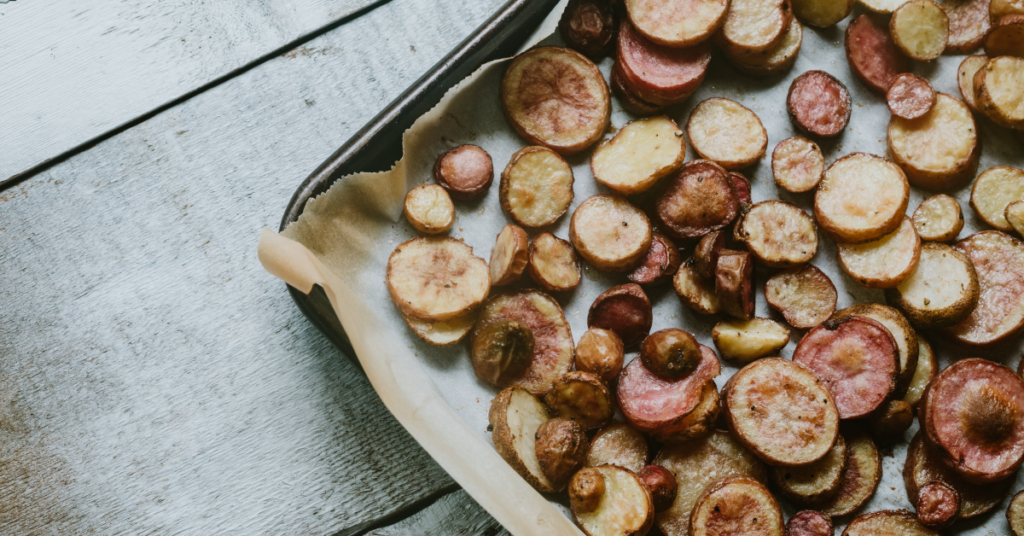
Potatoes: We Love You
Potatoes are one of our favorite things to eat and also one of our favorite crops to follow. They’re famously grown in New York’s Black Dirt Region, which is home to some of the most fertile soil in the world. Our Market 32 Red Potatoes and other home.grown. vegetables reap the benefits of this land! We’re lucky to have this geological treasure right in our Warwick, NY backyard. For more on that topic, check out our story on the Black Dirt Region here.
Our real story: February is National Potato Lovers Month and we’re putting spuds in the spotlight. One of the most versatile foods found in a supermarket, there are endless ways to prepare potatoes.
We reached into our large 50-pound bag and pulled out some of our favorite recipes:
- Rosemary-Garlic Hasselback Potatoes: Hasselback potatoes are quite the stylish side dish. Crispy on the edges and creamy on the inside, they include a little bit of everything you love all in one. Top with rosemary and garlic and you have a perfect companion for your main dish.
- Herb-Roasted Fingerling Potatoes: Fingerling Potatoes are tiny and unassuming, but they pack a burst of flavor that you may not expect. Due to their smaller, thin shape they cook quickly and are easy to prepare.
- Loaded Scalloped Sweet Potatoes: Potatoes and cheese have been a beautiful couple in cooking forever. Add bacon to the mix and you have a dreamy combination of satisfying flavor, especially when it comes with sweet potatoes.
- Carrot & Kale Latkes with Orange-Ginger Sour Cream: This Carrot & Kale version is an upgraded take on light, crispy latkes. The Orange-Ginger Sour Cream matches this recipe perfectly and brings the whole plate together for a satisfying bite.
- Mashed Potato, Cheddar & Leek Casserole: There are few better ways to enhance mashed potatoes than with cheddar cheese and bacon. Bring all of these into casserole and you’ll be blown away by the comfort food feels. This is a perfect survival dish for the rest of the February cold!
- Farmer’s Market Hash with Poached Eggs: One of our favorite morning meals is hash and eggs. This take, best made with home.grown. red potatoes and our PICS large eggs, really hits the spot!
- Roasted Garlic Parmesan Dip: This recipe itself doesn’t involve potatoes, but grab a bag of PICS Kettle Chips and dip away. You have an excellent party appetizer or something for when you’re just in need of a tasty snack. How about dipping some fries in this puppy?
The versatility of a potato is what makes them such a valuable food. With so many styles and preparation methods available at your fingertips, it’s impossible to not love spuds. Here we covered a starchy sample of awesome recipes, but we’ve barely even scratched the surface of all that potato potential! Stop by your local store or shop online to grab potatoes and get started on one of these recipes.
Happy Potato Month from your pals at Price Chopper & Market 32!
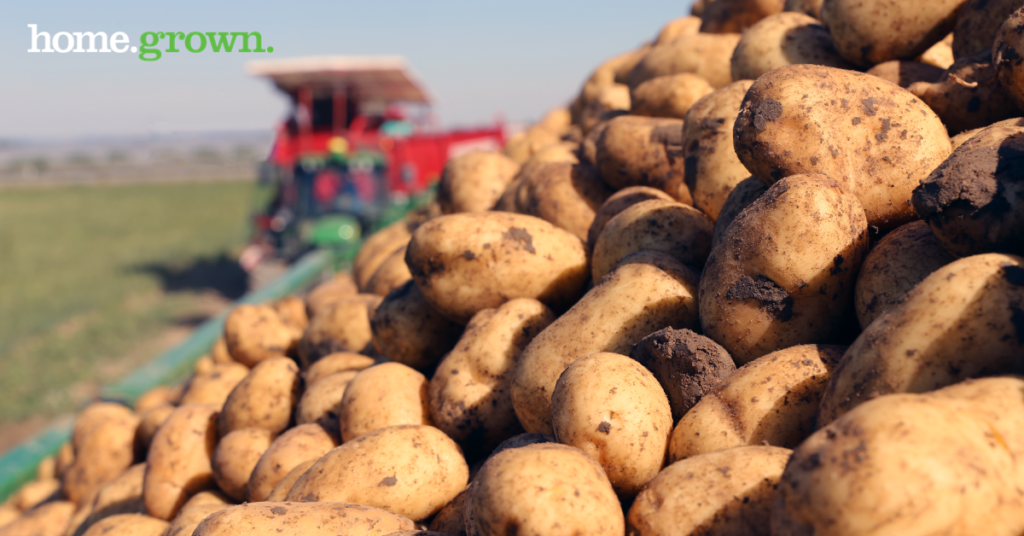
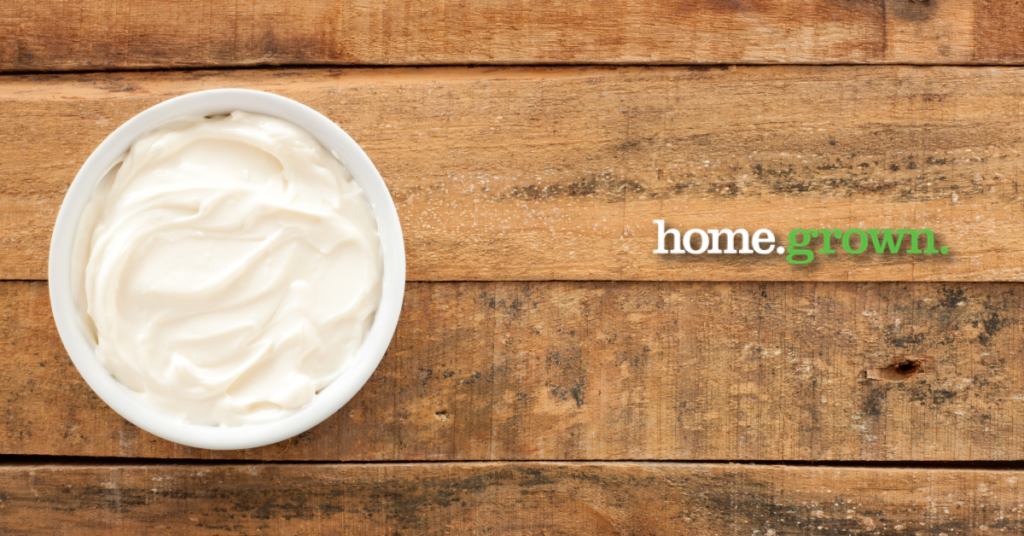
Location, Location…Location? The home.grown. Story of Philadelphia Cream Cheese
We provide a wide variety of home.grown. products to our customers, but did you know that one of America’s favorite cream cheeses is one these products? Philadelphia Cream Cheese is actually the product of small town Chester, NY, not Philly. So why is this tasty spread labeled Philadelphia when its roots are in NY? This is the tale of Philadelphia Cream Cheese.
As you can imagine there are a lot of myths of how Philadelphia Cream Cheese got its name. Tales such as “it originated in Philly then was stolen and brought to Upstate New York,” or “it’s from Philadelphia, NY” float around, but are untrue. According to the research done by world-renowned cream cheese expert Rabbi Jeffrey Marx, the name “Philadelphia Cream Cheese” is nothing more than a clever marketing scheme.
In the 1880s, Philadelphia was the country’s goldmine for all things dairy, producing the highest quality products due to its fertile land. At this time, many American dairy farms were producing a fresher, un-aged version of what in Europe is known as Neufchatel, a soft, crumby, mold-ripened cheese. Philadelphia was a hotbed for cheeses of this kind and had earned itself quite the reputation.
Meanwhile, in Chester, NY, dairyman William Lawrence was boosting the cream content in his cheese recipe, creating something new simply called, “cream cheese.” Lawrence was doing well, selling enough of his recipe to run a solid business, until he met New York cheese broker Alvah Reynolds. Reynolds pitched the idea of adding Philadelphia to the name of the recipe for better advertisement. Lawrence was intrigued, and “Philadelphia Cream Cheese” was born. Lawrence’s product became a booming success and eventually turned into the product that we love today.
Fast forward to the present day and cream cheese is still celebrated in neighborhoods in our region. In Lowville, NY, just a few miles from our Carthage Price Chopper, they host an annual Cream Cheese Festival featuring recipe contests, games, music, and more. Every year the event is a hit!
Craving cream cheese? Now that you know its rich, home.grown. history…it’s time to enjoy some! Find it at your local store or on our website, and check out our recipe picks below for some treats that put cream cheese in the spotlight!
